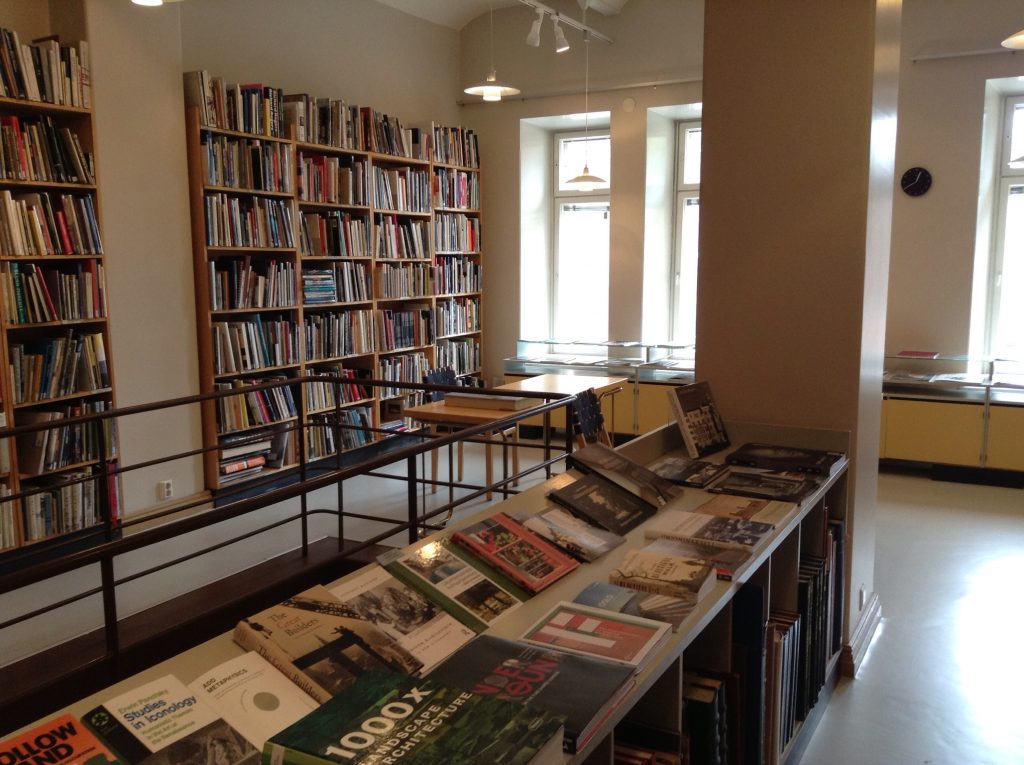Books build history 20.06.2017 – Posted in: Inspiration
The Nordic branch of art libraries network Arlis had their annual conference in Helsinki last week, and I was invited to give a speech at the event. What could be more rewarding an audience than a roomful of librarians to talk about old books and the meaning of libraries!
The conference focused on library customers, and I was asked to tell about how I used libraries when I worked a few years ago on my doctoral dissertation about postmodernism in Finnish architecture. In my original research, I looked at articles, project descriptions, competition programmes, exhibition catalogues and other archived stuff from the 1980s that dealt with postmodernism. I analysed the interpretations of the concept and the overall reception of the movement. I’m very fond of electronic databases, and I use them almost daily, but this kind of old stuff is something that you rarely find in them. Consequently, the physical library collections at the Aalto University Department of Architecture and the Museum of Finnish Architecture were crucial.

The library room at the Museum of Finnish Architecture in Helsinki.
The problem with e-archives is that you need a search term with which to begin your search. However, I usually don’t know what I’m searching until I find it. I’d also like to think that it’s my brilliant intelligence that was the driving force in my research. Sadly enough, it was more my material that guided me through. First I found one thing, which had an interesting reference, which led me to another thing, which had a new reference, which led my further, and so forth. Sometimes the reference was a proper footnote, but more often, it was just a vague comment in the text, or maybe even a hand-written marking by some reader. Have you ever heard of the snowball method? Well, here’s a perfect case of applying it. When I talk about how books and texts make history, this is what I mean. Every text carries along its own particular strand of a history of ideas and contributes data to a new strand of a history of ideas.
My talk concluded with four good wishes for art libraries which I thought to share with you. Hugs to all librarians, you are awesome.
- We never know what will be relevant in advance. Be proud of your collections and cherish them dearly. I found many irreplaceable titles on the Takeaway shelf just because nobody had borrowed them for a long time. Recent lending frequency is a tad thoughtless basis for an art library collection policy.
- Prefer versatility to all-inclusiveness. Consider your titles as a network of samples. One library cannot house every book in the world, so choose your sector but share responsibilities so that the missing titles can be found elsewhere.
- Develop your digital services. A good online database is the best possible starting point for any research. Show the user what you’ve got, but make your internet access as barrier-free as possible and give links to international databases in your field.
- Embrace public engagement: open up and replace the hierarchical dichotomy between The Library vs. The Users with an idea of being a real community for all book-lovers and enthusiasts. Build histories actively: promote reading, disseminate knowledge of books and their authors, tell about your new acquisitions, establish reading circles, give some showtime for a forgotten gem in your collections, organise thematic discussion events. It has already been done in the publishing industry and many public libraries. Old books deserve a least as much attention.



